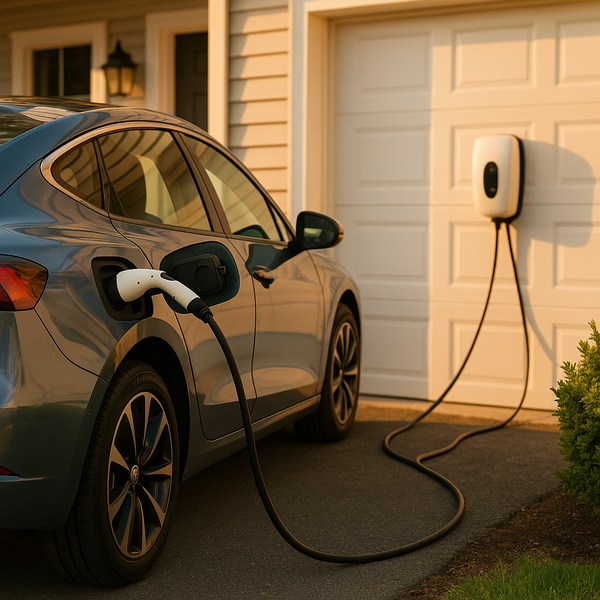
Electric vehicles represent a significant step towards sustainable transportation, and their battery is the heart of this innovation. Understanding how to properly care for your EV battery is crucial not only for maintaining range and performance but also for ensuring its longevity. By adopting mindful charging habits and paying attention to environmental factors, you can significantly extend the useful life of your electric car's most vital and valuable component.
Understanding EV Battery Degradation
EV batteries, primarily lithium-ion, naturally degrade over time and with use. This degradation manifests as a gradual decrease in the total energy the battery can store and deliver, impacting the vehicle's range. Factors influencing this process include the number of charge cycles, the depth of discharge, charging speeds, and exposure to extreme temperatures. While degradation is inevitable, its rate can be significantly influenced by how the battery is treated. Modern EVs often feature sophisticated battery management systems (BMS) designed to minimize stress on the cells, but owner practices play a crucial role in supplementing these systems.
Mindful Charging Habits
One of the most impactful ways to extend battery life is by adjusting your charging habits. Regularly charging the battery to 100% and letting it deplete to near 0% puts more stress on the cells. Most manufacturers and battery experts recommend keeping the state of charge (SOC) between 20% and 80% for daily driving. This reduces the time the battery spends at the extreme ends of its charge cycle, which are typically more strenuous on the battery chemistry. While it's okay to charge to 100% occasionally for longer trips, doing so routinely can accelerate degradation. Similarly, avoid letting the battery sit for extended periods at very low or very high states of charge.
The Impact of Charging Speed
Fast charging, particularly DC fast charging, is convenient for long road trips but generates more heat and puts higher stress on the battery compared to Level 1 (standard wall outlet) or Level 2 (240V) AC charging. Frequent reliance on fast charging can contribute to faster degradation. Whenever possible, utilize Level 2 charging for daily needs, especially for overnight charging. This slower, more gradual charging process is gentler on the battery cells, helping to preserve their health over the long term. Think of it like exercising – a steady pace is better for endurance than constant sprints.
Temperature Management is Key
Extreme temperatures, both hot and cold, are detrimental to EV battery health. High temperatures accelerate chemical reactions within the battery cells, leading to faster degradation. Parking in shade or using battery preconditioning systems (if available) before charging or driving in hot weather can mitigate this. Conversely, very cold temperatures reduce battery efficiency and regenerative braking effectiveness. While modern EVs have thermal management systems that heat or cool the battery pack, avoiding prolonged exposure to extreme cold when parked and utilizing preconditioning in winter helps the battery operate within its optimal temperature range.
Driving Style Matters
Aggressive driving, characterized by rapid acceleration and hard braking, demands high power output from the battery and puts more stress on its components. Practicing smoother acceleration and utilizing regenerative braking effectively reduces the strain on the battery. Regenerative braking converts kinetic energy back into stored electrical energy, which is not only efficient but also less taxing on the battery than using friction brakes excessively. A smooth driving style contributes to better efficiency and battery longevity.
Battery Maintenance and Software Updates
While EVs require less maintenance than internal combustion engine cars, battery health isn't entirely maintenance-free. Keep your vehicle's software updated. Manufacturers frequently release software updates that optimize battery management algorithms, improving efficiency, performance, and longevity. It's also wise to be aware of any manufacturer recommendations regarding battery checks or service intervals. Some service centers can perform diagnostic tests to assess battery health, providing valuable insights into its condition.
Storage Considerations
If you plan to store your EV for an extended period, follow the manufacturer's recommendations for battery state of charge during storage. Typically, storing an EV with the battery at around 50% SOC in a temperature-controlled environment is recommended. Storing a battery at 0% or 100% charge for long periods can be harmful. Refer to your owner's manual for specific guidance on long-term storage.
Understanding Your Vehicle's Battery Management System (BMS)
Modern EVs are equipped with sophisticated Battery Management Systems. The BMS monitors individual battery cells, manages charging and discharging, balances cell voltage, and controls the thermal management system. Understanding how your vehicle's BMS works and heeding its warnings or recommendations (like limiting charging in extreme temperatures) is vital for battery health. Some vehicles even provide data on battery health or predicted lifespan within their infotainment systems or companion apps.
The Role of Chemistry and Design
The specific chemistry (e.g., NMC, NCA, LFP) and design of an EV battery pack also influence its inherent longevity and tolerance to various conditions. While you cannot change the battery chemistry of your vehicle, being aware of the general characteristics of the battery type in your car can help inform your care practices. For example, LFP batteries are often cited as being more tolerant to being charged to 100% regularly compared to NMC batteries, although manufacturers may still recommend limiting full charges for optimal long-term health.
Conclusion
Maximizing the lifespan of your EV battery is achievable through conscious effort and adherence to best practices. By being mindful of charging levels, managing temperature exposure, driving smoothly, keeping software updated, and following storage recommendations, you can help ensure your electric vehicle maintains its performance and range for years to come. These simple steps protect your investment and contribute to a more sustainable and reliable driving experience.

